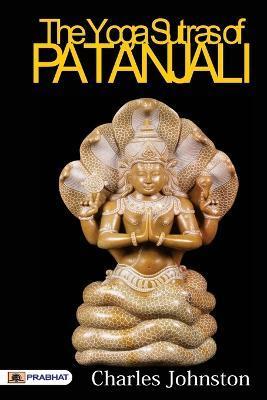The Yoga Sutras of Patanjali

The Yoga Sutras of Patanjali
The metaphysics of Patanjali is built on the same dualist foundation as the Samkhya school. The universe is conceptualized as two realities in Samkhya-Yoga schools: Puruṣa (consciousness) and Prakriti (mind, cognition, emotions, and matter). It considers consciousness and matter, self/soul and body as two different realities. Jiva (a living being) is considered as a state in which puruṣa is bonded to Prakriti in some form, in various permutations and combinations of various elements, senses, feelings, activity, and mind. During the state of imbalance or ignorance, one of more constituents overwhelms the others, creating a form of bondage. The end of this bondage is called Kaivalya, liberation, or moksha by both Yoga and Samkhya schools. The ethical theory of Yoga school is based on Yamas and Niyama, as well as elements of the Guṇa theory of Samkhya.
Patanjali adopts the theory of Guṇa from Samkhya. Guṇas theory states that three Gunas (innate tendency, attributes) are present in different proportions in all beings, and these three are sattva guna (goodness, constructive, harmonious), rajas guna (passion, active, confused), and tamas guna (darkness, destructive, chaotic). These three are present in every being but in different proportions, and the fundamental nature and psychological dispositions of beings are a consequence of the relative proportion of these three Gunas. When sattva guna predominates an individual, the qualities of lucidity, wisdom, constructiveness, harmony, and peacefulness manifest themselves; when rajas are predominant, attachment, craving, passion-driven activity, and restlessness manifest; and when tamas predominates in an individual, ignorance, delusion, destructive behavior, lethargy, and suffering manifests. The guṇas theory underpins the philosophy of mind in the Yoga school of Hinduism.
PRP: 107.38 Lei
Acesta este Pretul Recomandat de Producator. Pretul de vanzare al produsului este afisat mai jos.
91.27Lei
91.27Lei
107.38 LeiLivrare in 2-4 saptamani
Descrierea produsului
The metaphysics of Patanjali is built on the same dualist foundation as the Samkhya school. The universe is conceptualized as two realities in Samkhya-Yoga schools: Puruṣa (consciousness) and Prakriti (mind, cognition, emotions, and matter). It considers consciousness and matter, self/soul and body as two different realities. Jiva (a living being) is considered as a state in which puruṣa is bonded to Prakriti in some form, in various permutations and combinations of various elements, senses, feelings, activity, and mind. During the state of imbalance or ignorance, one of more constituents overwhelms the others, creating a form of bondage. The end of this bondage is called Kaivalya, liberation, or moksha by both Yoga and Samkhya schools. The ethical theory of Yoga school is based on Yamas and Niyama, as well as elements of the Guṇa theory of Samkhya.
Patanjali adopts the theory of Guṇa from Samkhya. Guṇas theory states that three Gunas (innate tendency, attributes) are present in different proportions in all beings, and these three are sattva guna (goodness, constructive, harmonious), rajas guna (passion, active, confused), and tamas guna (darkness, destructive, chaotic). These three are present in every being but in different proportions, and the fundamental nature and psychological dispositions of beings are a consequence of the relative proportion of these three Gunas. When sattva guna predominates an individual, the qualities of lucidity, wisdom, constructiveness, harmony, and peacefulness manifest themselves; when rajas are predominant, attachment, craving, passion-driven activity, and restlessness manifest; and when tamas predominates in an individual, ignorance, delusion, destructive behavior, lethargy, and suffering manifests. The guṇas theory underpins the philosophy of mind in the Yoga school of Hinduism.
Detaliile produsului









